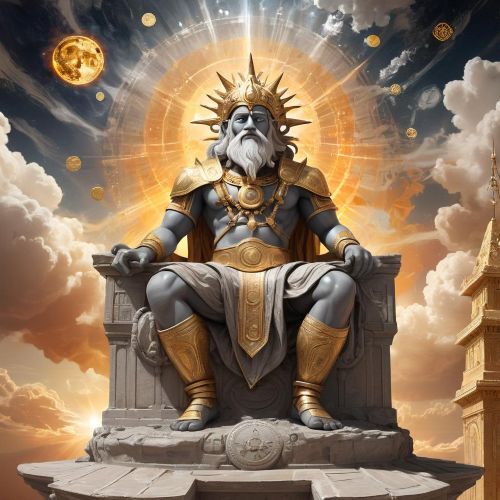Khanty & Mansi Mythology
Khanty and Mansi mythology forms one of the most remarkable spiritual systems of northern Eurasia, preserved by two closely related Ugric-speaking peoples who inhabit the forests and river valleys of western Siberia. Deeply rooted in animism and shamanic belief, Khanty and Mansi mythology reveals a worldview where every part of nature — from rivers and mountains to animals and the wind — is inhabited by living spirits. These mythologies express harmony, reverence, and balance, reflecting the traditional way of life of fishing, hunting, and reindeer herding. Passed down through oral traditions, songs, and rituals, the stories of the Khanty and Mansi serve not only as spiritual guidance but also as ecological wisdom for surviving in the challenging northern wilderness.
At the heart of Khanty and Mansi mythology is a sophisticated cosmology centered around the sky god Num-Torum, the supreme creator and ruler of the Upper World. He governs the order of the cosmos, bringing light, justice, and life. Beneath him exists a hierarchy of divine beings, including Kaltash-Ekva, the earth mother who nurtures fertility and abundance, and As-Iki, the god of water and fish, vital for the survival of river-based communities. The universe is traditionally viewed as a three-tiered structure: the Upper World of gods, the Middle World of humans and animals, and the Lower World of dark spirits and ancestral souls. Shamans act as mediators between these realms, traveling through trance to heal, protect, and restore balance. These spiritual journeys emphasize the interconnectedness between humans and nature — a belief central to both Khanty and Mansi traditions.
The myths within Khanty and Mansi mythology are filled with vivid imagery and moral lessons that mirror the people’s deep bond with their environment. Creation myths tell how Num-Torum formed the world from a drop of water or a grain of sand, while his children shaped the mountains, forests, and rivers. Many tales revolve around the deeds of divine siblings and heroic ancestors who navigate both human and spiritual realms. Animal spirits play a major role — the bear, in particular, is considered sacred and a direct descendant of the gods. The Bear Festival, one of the most important rituals among both peoples, honors the bear as a divine messenger and guardian spirit. Wolves, eagles, and fish also hold symbolic significance, representing courage, vision, and abundance. Through these stories, the Khanty and Mansi express gratitude toward nature and the spiritual forces that sustain life.
In the modern era, Khanty and Mansi mythology continues to influence cultural revival and identity across the region. Despite pressures of industrialization and modernization, traditional practices, songs, and festivals are being preserved by local communities and scholars. Contemporary artists and writers reinterpret ancient myths through film, literature, and digital media, bridging old wisdom with modern expression. The environmental ethics embedded in these myths — that all living beings share the same spirit and destiny — resonate powerfully today. Khanty and Mansi mythology endures as a living testament to the unity between humanity and nature, offering timeless lessons about respect, harmony, and coexistence in a world where every river, tree, and creature holds divine meaning.


